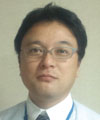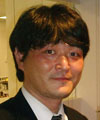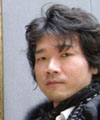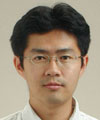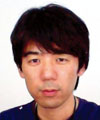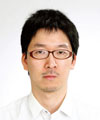 |
|||||||||
|
|
|||||||||
|
Information Vol. 9, No. 11, pp. 51–55, Nov. 2011. https://doi.org/10.53829/ntr201111in2 Report on NTT Communications Science Laboratories
|
|||||||||
| † | NTT Communications Science Laboratories Soraku-gun, 619-0237 Japan |
|---|
1. Overview
Open House at NTT Communications Science Laboratories in Keihanna Science City, Kyoto (hereinafter referred to as the open house) is an annual event. This year, it welcomed over 1100 visitors on June 9 and 10 [1], [2]. The theme of this year's event was the 20th Anniversary of NTT Communications Science Laboratories (CS Labs). The CS Labs, which belongs to the Science and Core Technology Laboratory Group, is a source of new principles and concepts in fields including media and communications, information science, and human science. It is accommodated at two locations: Keihanna Science City in Seika-cho, Kyoto, and Atsugi City in Kanagawa Prefecture.
The open house receives many visitors every year. The visitors during the course of this year's open house included NTT Group employees and people from companies, universities, and research facilities engaged in research and development, business, and education. The presentations and exhibitions are introduced below. More details about some of the topics can be found in the Feature Articles in this issue.
2. 20th Anniversary of CS Labs
Noritaka Uji, Representative Director and Senior Executive Vice President of NTT, opened the event with words of welcome (Photo 1). He thanked all those that have supported research at CS Labs leading up to its 20th anniversary and asked for their continued support. He then described his hopes for future basic research.
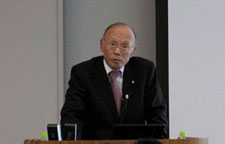
Photo 1. Noritaka Uji, NTT Representative Director and Senior Executive Vice President, giving an address.
Makoto Nagao, the Chief Librarian at the National Diet Library, then gave a message in celebration of the 20th anniversary.
Finally, Naonori Ueda, the Director of CS Labs, offered a greeting and discussed some of CS Labs' history, recent research results, and future research directions, interwoven with overviews of some of the exhibits and presentations featured in the open house (Photo 2).
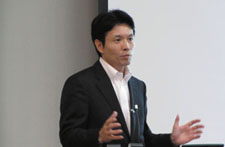
Photo 2. Naonori Ueda, Director of CS Labs, giving an address.
The history of CS Labs was described in a booklet commemorating the 20th anniversary that was given to each visitor, and a related presentation in a special booth showed a timeline displaying organizational transitions and major research results (Fig. 1).
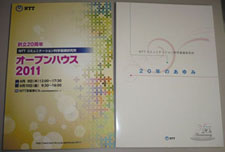
Fig. 1. Booklet commemorating the 20th anniversary and related document.
3. Research presentations
Five research presentations were given, highlighting recent significant research results and high-profile research themes.
- "Supporting Communication in Global Networks−Machine Translation and Social Network Mining," Kevin Duh and Albert Ching-man Au Yeung (Innovative Communication Laboratory)
- "Formal Methods for Security and Privacy," Yasuyuki Tsukada (Innovative Communication Laboratory)
- "Human Interfaces Based on Applied Sensory-illusion Engineering," Tomohiro Amemiya (Human and Information Science Laboratory)
- "Achievement for Ambient Intelligence Project−Steps towards IT Environment Appropriately Communicating with Humans," Yasuhiro Minami (Media Information Laboratory)
- "Interaction: Invention? Intellection!," Naomi Yamashita (Media Information Laboratory)
Each presentation introduced some of the latest research results, including some background and an overview of the research. All the talks were very well received by the many participants.
"Supporting Communication in Global Networks" provided an overview and discussed some of the latest trends in communications analysis technology. Presented in English, it focused on technology utilizing the huge number of messages being exchanged over the Internet and statistical machine translation, which works on the basis of huge quantities of data (Photo 3).
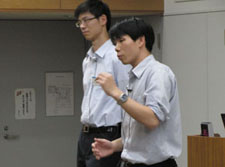
Photo 3. Research presentation by Dr. K. Duh and Dr. A. C. Au Yeung.
"Interaction: Invention? Intellection!" introduced the latest results in interaction research at the CS Labs and raised questions regarding what contributions researchers need to make to the research community and what the research field needs in order to grow (Photo 4).
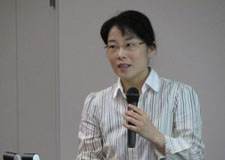
Photo 4. Research presentation by Dr. N. Yamashita.
4. Research exhibits
The open house featured 30 exhibits displaying the latest research results and was divided into four zones: Moriya Research Laboratory, Innovative Communication Laboratory, Media Information Laboratory, and Human and Information Science Laboratory. Each exhibit was accommodated in a booth and used techniques such as slides on a large-screen monitor or hands-on demonstrations, with researchers explaining the latest results directly to visitors (Photo 5).
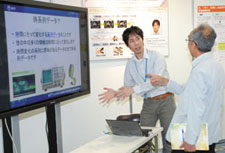
Photo 5. Researcher explaining the latest results directly to a visitor.
4.1 Moriya Research Laboratory
- Relationship between respiration and music: Possibility of music presentation that corresponds to respiration frequency
4.2 Innovative Communication Laboratory
- Enhancing the feasibility of a novel quantum computational model: Measurement-based method for quantum operations
- How to cut a cake fairly: Meta-envy-free cake-cutting protocols
- Aiming at promoting content circulation: A formal approach to interoperability between licenses
- Reading between the lines for extracting 5W1H*1 from texts: Highly accurate analysis of subjects and objects for real-world texts
- More data are better data: High-performance dependency parsing using large quantities of text data
- How many points do you give for this translation? Why do you use BLEU*2?
- Early recognition methods for time sequence classification
- Efficient data gathering using singular value decomposition for sensor networks
- Recognizing human activities with magnetic fields: Finger-ring-type sensor device with magnetic sensors for healthcare and fitness monitoring
4.3 Media Information Laboratory
- Stereo 9-band camera system for accurately estimating object color and shape
- Link to media: Robust media search on smartphones and web browsers
- Instantaneous detection of identical image patterns: Fast image matching technique
- Detecting and annotating generic objects in the real world: Easy-to-use semi-supervised learning for generic object recognition
- How to train an agent using dialogue data: Statistical dialogue control for natural and satisfying interactions
- How conversational robots achieve smartly timed speech behavior: Adaptive timing control of robot behavior for smooth human-robot interaction
- Viscuit: Digital education tool for co-production and creation−Practice of visual programming language teaching on the network
- Bridging interaction analysis and system design: What has the t-Room solved, and what has it not yet solved?
- Optical dice: Compact and fast random bit generator using a laser chip
- Understanding empathy between people from their smiles
- Automatic-speech-recognition-friendly speech enhancement: Noise-robustness techniques based on learning what natural speech is like
- It's OK to leave some noise! Unification of noise reduction technique and speech recognizer
- Speech recognition system that learns from errors: Discriminative model training for speech recognition
- Meeting assistance system that rapidly indicates who spoke when and what: Technology for analyzing the scene of a multi-speaker conversation
4.4 Human Information Science Laboratory
- The mechanism of visual motion integration over space
- Why complain when listening? Auditory tests that sense brain variability
- Touchable illusions: Tools for understanding human tactile perception
- Subliminal perception and underlying mechanism of mind
- Smooth writing by optic flow: How the implicit visuomotor system works
- Guide you to the desired place: Route navigation by pseudo-attraction force "Buru-Navi"
At the "Guide you to the desired place" exhibit, many visitors actually held the Buru-Navi device and tried out the indoor navigation technology (Photo 6). "Touchable illusions" introduced tactile illusions, which many visitors tried, and included a demonstration in which two strings attached to a tennis racquet were held in the hands. The strings moved up and down and produced a slippery feeling on the palms (Photo 7).

Photo 6. Visitor holding the Buru-Navi device and trying the indoor navigation technology.
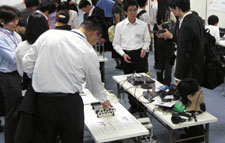
Photo 7. Visitors trying touchable illusions.
5. Invited talk
This year also featured an invited talk by Professor Mariko Hasegawa of the Graduate University for Advanced Studies. Professor Hasegawa spoke on the topic of "Birdsongs and human tweets: Evolution of human communication and ICT society" (ICT: information and communications technology) (Photo 8). She covered many topics, from the courtship behavior of peacocks and a comparison of language acquisition in humans and chimpanzees to the contribution of information technology (IT) to the evolution of human communications. She closed by raising the question of the role of communications technology in society and talking about her hopes for NTT in that regard.
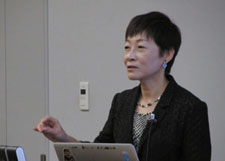
Photo 8. Professor Mariko Hasegawa of the Graduate University for Advanced Studies giving an invited talk.
6. Concluding remarks
Many visitors from previous years came again to see this year's research results at CS Labs. They engaged in lively discussions regarding the research presentations and exhibits and provided many valuable opinions about the results. In closing, we would like to offer our sincere thanks to all the visitors and participants who attended this event.
References
| [1] | Open House website (in Japanese). http://www.kecl.ntt.co.jp/openhouse/2011/ |
|---|---|
| [2] | Open House poster. http://www.kecl.ntt.co.jp/openhouse/2011/oh2011_poster_en.pdf |
| [3] | OSGi. http://www.osgi.org/ |








